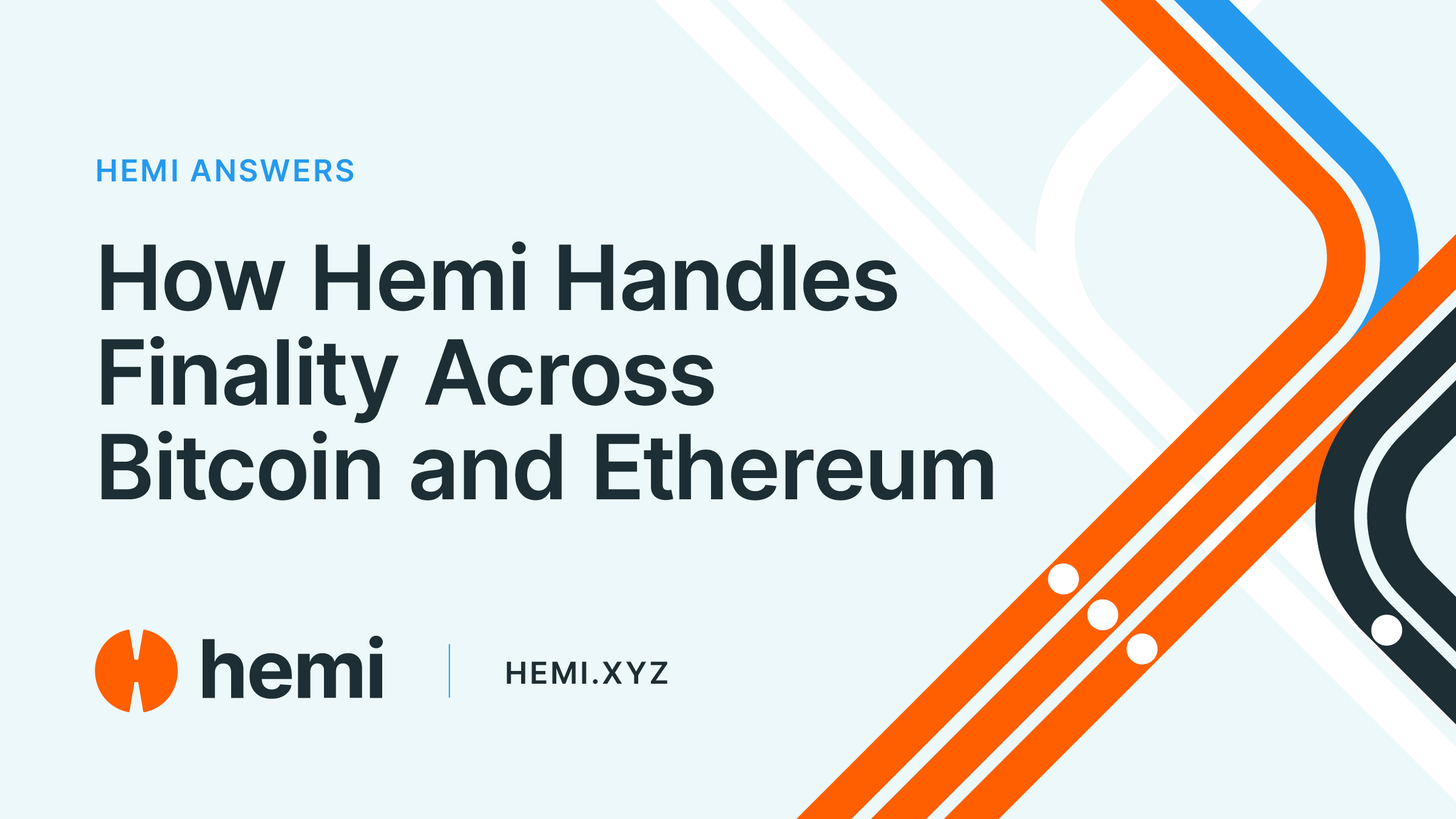- Bitcoin
- Ethereum
- Hemi
- Learn Center
- August 2, 2025
How Hemi Handles Finality Across Bitcoin and Ethereum
Lorem ipsum dolor sit amet consectetur. Aliquet nunc at justo nibh id eget.

In blockchain systems, finality — the point at which a transaction is considered irreversible — is critical for trust and security. Bitcoin and Ethereum both achieve finality in different ways, and aligning them for cross-chain interoperability is one of the most complex challenges in decentralized infrastructure.
Hemi’s architecture solves this problem through Proof-of-Proof (PoP) and crypto tunnels, creating a secure and verifiable pathway for applications that need to operate across both networks.
Understanding Finality in Bitcoin and Ethereum
- Bitcoin Finality — Bitcoin uses probabilistic finality. Transactions are considered increasingly secure as more blocks are mined on top of them. A typical standard is 6 confirmations, though high-value transactions may wait for more.
- Ethereum Finality — With Proof-of-Stake and its Casper FFG mechanism, Ethereum offers economic finality, achieved once validators finalize a checkpoint. This happens every few minutes, with a high cost to revert.
For cross-chain applications, these different models create a synchronization problem: how to verify that an event on one chain is truly final before acting on it in another.
The Cross-Chain Finality Challenge
When moving value or executing logic across Bitcoin and Ethereum, premature assumptions about finality can create major risks:
- Double-spends if a Bitcoin transaction is reversed before full confirmation.
- Conflicting state if an Ethereum transaction is reverted due to a chain reorganization.
- Loss of funds or incorrect contract execution when timing assumptions are wrong.
Traditional crypto bridges often handle this with centralized or semi-centralized validators, but this introduces a single point of failure.
How Hemi Aligns Bitcoin and Ethereum Finality
Hemi’s Proof-of-Proof process embeds verifiable state commitments from one chain into the other. This means that:
- Bitcoin transactions are only acted upon in Ethereum once PoP confirms they are deeply anchored in the Bitcoin chain.
- Ethereum transactions are committed into Bitcoin via PoP, ensuring that Bitcoin-side logic only executes after Ethereum’s finality checkpoint is reached.
Because the proofs are stored directly in the base layers, no external validator set is needed to attest to finality.
The Role of Crypto Tunnels
Hemi’s crypto tunnels are the secure message pathways that move these proofs and state updates between chains. Unlike traditional bridges, they do not custody assets or depend on off-chain consensus. Instead, they rely on the finality guarantees of the underlying blockchains themselves.
This design ensures that cross-chain operations only execute when both Bitcoin and Ethereum have reached their own, independent definitions of finality.
Why This Matters for Developers and Users
By aligning Bitcoin and Ethereum finality natively, Hemi enables:
- Safer Cross-Chain DeFi — No premature execution or settlement.
- Bitcoin-Aware Smart Contracts — Ethereum contracts can trust Bitcoin events without custodial intermediaries.
- Lower Security Risk — Eliminates a major attack surface in cross-chain bridge design.
For developers, this means building on Hemi is not just about interoperability — it’s about inheriting the strongest possible guarantees from both Bitcoin and Ethereum.